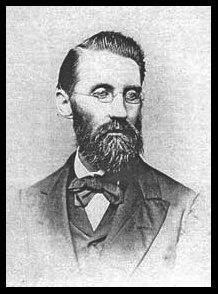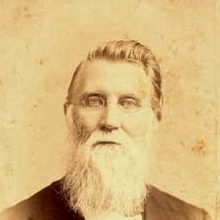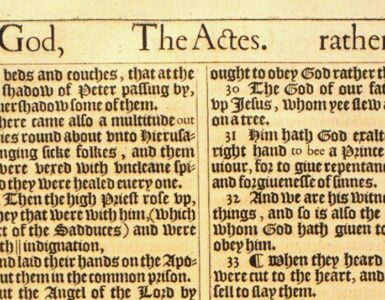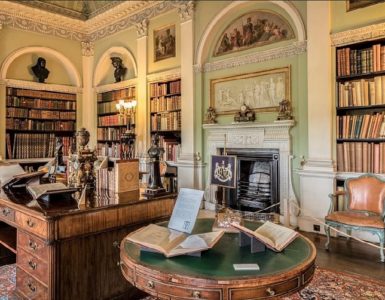 James Woodrow was born in Carlisle, England, May 30, 1828, the son of Rev. Thomas Woodrow, D.D., a native of Scotland. In 1886 the family moved to Canada, then the next year settled in the United States in Chillicothe, Ohio, where Rev. Woodrow was installed pastor of the First Presbyterian Church. James’s preparatory education for matriculation in Jefferson College, Pennsylvania, was provided by the combined efforts of his father and an academy in Chillicothe. At the time, the college was under the presidency of Rev. Dr. Robert J. Breckinridge. James graduated with first honors in the class of 1849. After leaving college he spent several years teaching school before becoming professor of natural science in Oglethorpe University, Georgia, in 1852. During his time on the faculty he continued his studies. In 1853 he spent some time at the Lawrence Scientific School, Harvard University, studying with professors Eben N. Horsford and Louis Agassiz, then in 1855 he went to Heidelberg, Germany, where he studied with the renowned chemist, Robert W. Bunsen, and earned the degree of Ph.D. Though only twenty-seven years of age, Woodrow was offered a full professorship in Heidelberg but he chose instead to return to the United States. However, after leaving Heidelberg he traveled on the continent studying geology in the field and pursuing additional studies in Naples, Vienna, Berlin, Freiberg (at the Mining Academy), London, and Paris. In 1857 he was elected professor of natural science in the University of Georgia, but he did not accept the position until he was elected again, but before he took on his duties the University of Georgia released him to accept the Perkins Professorship in Columbia Theological Seminary in South Carolina, where he began his duties January 1, 1861.
James Woodrow was born in Carlisle, England, May 30, 1828, the son of Rev. Thomas Woodrow, D.D., a native of Scotland. In 1886 the family moved to Canada, then the next year settled in the United States in Chillicothe, Ohio, where Rev. Woodrow was installed pastor of the First Presbyterian Church. James’s preparatory education for matriculation in Jefferson College, Pennsylvania, was provided by the combined efforts of his father and an academy in Chillicothe. At the time, the college was under the presidency of Rev. Dr. Robert J. Breckinridge. James graduated with first honors in the class of 1849. After leaving college he spent several years teaching school before becoming professor of natural science in Oglethorpe University, Georgia, in 1852. During his time on the faculty he continued his studies. In 1853 he spent some time at the Lawrence Scientific School, Harvard University, studying with professors Eben N. Horsford and Louis Agassiz, then in 1855 he went to Heidelberg, Germany, where he studied with the renowned chemist, Robert W. Bunsen, and earned the degree of Ph.D. Though only twenty-seven years of age, Woodrow was offered a full professorship in Heidelberg but he chose instead to return to the United States. However, after leaving Heidelberg he traveled on the continent studying geology in the field and pursuing additional studies in Naples, Vienna, Berlin, Freiberg (at the Mining Academy), London, and Paris. In 1857 he was elected professor of natural science in the University of Georgia, but he did not accept the position until he was elected again, but before he took on his duties the University of Georgia released him to accept the Perkins Professorship in Columbia Theological Seminary in South Carolina, where he began his duties January 1, 1861.
Dr. Woodrow had been ordained to the ministry in 1860, having prepared for theological examination through his own studies. During the Civil War, when the exercises of the seminary were interrupted, he was active in rendering services to the Presbyterian Church in the Confederate States of America (PCCSA). From 1865 until 1898 he was editor of the Southern Presbyterian, and from 1861 until 1885 he published and edited the Southern Presbyterian Review. From 1869 until 1872 he was the professor of chemistry and geology in South Carolina College. In 1872 he and his family relocated to Europe for about two years. When the family returned to the United States, Dr. Woodrow continued to teach in the seminary for several years, but on May 7, 1884, at a meeting of the alumni he delivered an address that led to a controversial period of his life. He argued that evolution could be considered “God’s plan of creation” without contradicting Christian theism. He was removed from the seminary for holding views inconsistent with Scripture and the Westminster Standards, but the action was not sustained by the controlling synods of the Presbyterian Church in the United States (PCUS) and he returned to the lectern. In 1886 he was again removed, but this time by order of the synods responsible for the seminary and he would not return to teach ministerial students. Woodrow had also been teaching for some years across town in South Carolina College. The theological issues with Woodrow’s views were never fully resolved as he continued a minister in good standing in the PCUS. Even though he had lost the professorship in the seminary, Dr. Woodrow continued to teach in the college until it was reorganized in 1891 and he became the college president. He retired in June 1897. Retirement did not mean inactivity because Dr. Woodrow later that summer attended at the invitation of Russia’s Czar Nicholas, II, the International Geological Congress at St. Petersburg.
In the years following his retirement he became a popular executive in the world of business, finance, insurance, railroads, and banking. Dr. Woodrow was president of the Central National Bank of Columbia, of the South Carolina Home Insurance Company, of the Carolina Loan and Investment Company, and of the People’s Building and Loan Association. He was also vice-president of the Mutual Beneficial Building and Loan Company; a director of the Columbia, Newberry, and Laurens Railroad; and of the Charlotte, Columbia and Augusta Railroad. Among the various scientific societies of which he was a member were the German Association of Naturalists, the Isis of Dresden, the Swiss Association of Naturalists, the Victoria Institute of London, and the American Association for the Advancement of Science.
James Woodrow was an active participant in the judicatories of the PCUS. He served on committees, was a commissioner in general assembly meetings, and he was a moderator. He was also for more than ten years the treasurer of the Committee of Home and Foreign Missions. His short list of publications included articles such as, “Geology and Its Assailants” (1868), “Certain Recent Assaults on Physical Science” (1873-74), “Evolution” (1884), his defense before the synod of South Carolina (1884), and his argument before the General Assembly of the PCUS that met in Baltimore (1888). His few writings show considerable interest in evolution before he was confronted regarding his alumni lecture of 1884. The degree of M.D. was conferred upon him by the Medical College of Georgia, the D.D. by Hampden-Sydney College, and an LL.D. by Davidson College. Dr. Woodrow was married in Dalton, Georgia in 1857, to Felle, who was the daughter of Rev. John W. Baker. James and Felle had four children. James Woodrow, Ph.D., D.D., LL.D., died January 17, 1907.
This Presbyterians of the Past biography is primarily adapted from his entry in The National Cyclopedia of American Biography Being the History of the United States, [etc.], vol. 11, New York: James T. White and Col, 1901, pages 35-36; for more information regarding Woodrow and the evolution controversy in the PCUS, see David B. Calhoun, Our Southern Zion: Old Columbia Seminary (1828-1927), Banner of Truth, 2012.
Barry Waugh
For a PDF download of James Woodrow’s “One Lord, One Faith, One Baptism,” The Characteristics or Marks of the Holy Catholic Church, and the Stumbling-Blocks in the Way of those who would Enter It. Sermon Preached before the Synod of South Carolina, at Columbia, S.C., October 21, 1902, Published by Request, Columbia: R. L. Bryan Company, 1902, click
Source–Both portraits of James Woodrow were provided courtesy of Director Wayne Sparkman of the PCA Historical Center.





